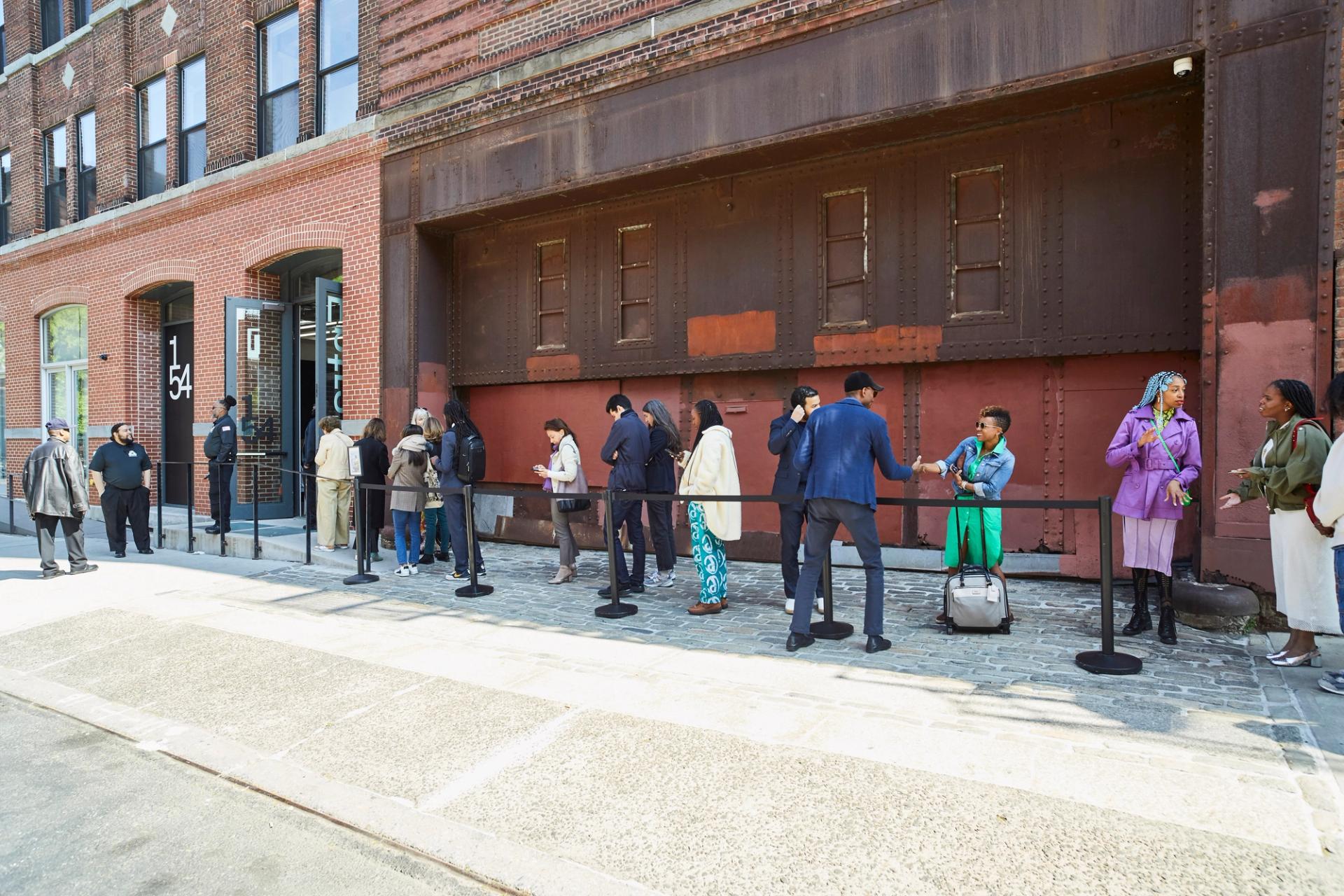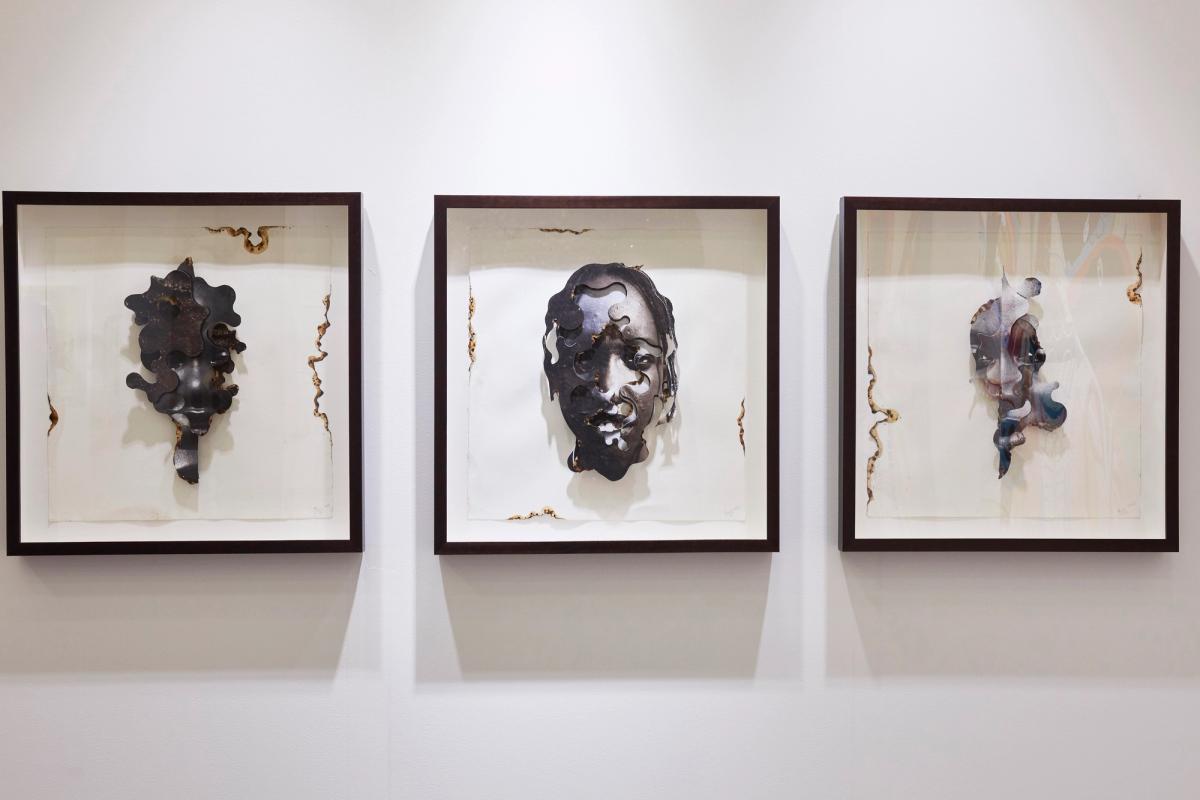In the overfilled May art market calendar, the 1-54 Contemporary African Art Fair (until 21 May) feels like a breath of fresh air. During the VIP preview on Thursday (18 May), the sun was filling the fair’s new venue, a warehouse in Harlem that housed the gallery Gavin Brown's enterprise before it closed in 2020.
With 26 stands, this is 1-54’s largest iteration in New York yet since the fair—named for the 54 countries in Africa—first expanded to the US in 2015. Since the director Touria El Glaoui launched the fair in 2013 in London, the market for contemporary art from Africa and its diaspora has exploded, she says.
“When I first started, it was very difficult to find enough galleries to fill the fair, and there was definitely less of an appreciation for African artists—not only at the auction houses but even at the international mainstream art fairs,” El Glaoui says. That has changed in the years since, she explains, with some of the world’s biggest galleries now representing artists from across Africa, and their work getting more recognition in museums and attention at auction.

People queueing at the new entrance to 1-54 New York Photo: Eva Sakellarides
At this year’s 1-54, there are four galleries from Nigeria, the most populous country in Africa. One of those is the Lagos-based Wunika Mukan Gallery, showing work by Edozie Anedu, a 26-year-old Nigerian artist. Anedu’s colourful canvases at the fair, which range in price from $5,000 to $7,000, show a blue figure that represents long-gone ancestors.
“Edozie is different from most artists coming out of Nigeria,” Mukan says. “He thinks out-of-the-box and pushes himself beyond portraits and domestic scenes. He ties in tradition and being a young Black African artist and what that looks like.”
Lagos is home to a burgeoning art scene that is still largely artist-driven, Mukan says. Since 2019, the city’s artistic community has grown thanks to what Mukan describes as a “perfect storm” of the Black Lives Matter movement in the West and the pandemic forcing people home, where they began engaging with Nigerian artists on Instagram. Many of the city’s galleries are also run by women.
“It’s a good time to be a Black woman in art,” Mukan says.


